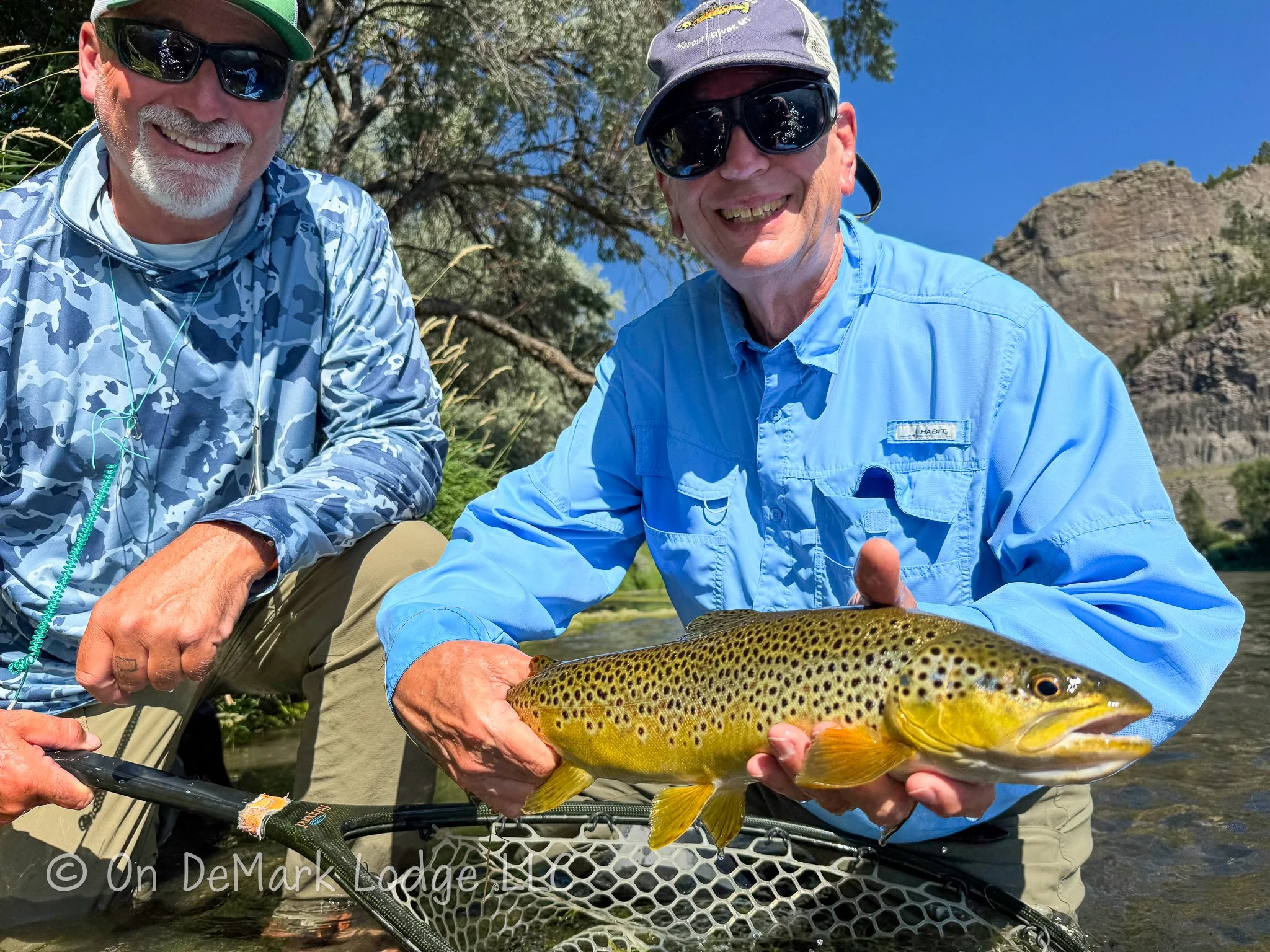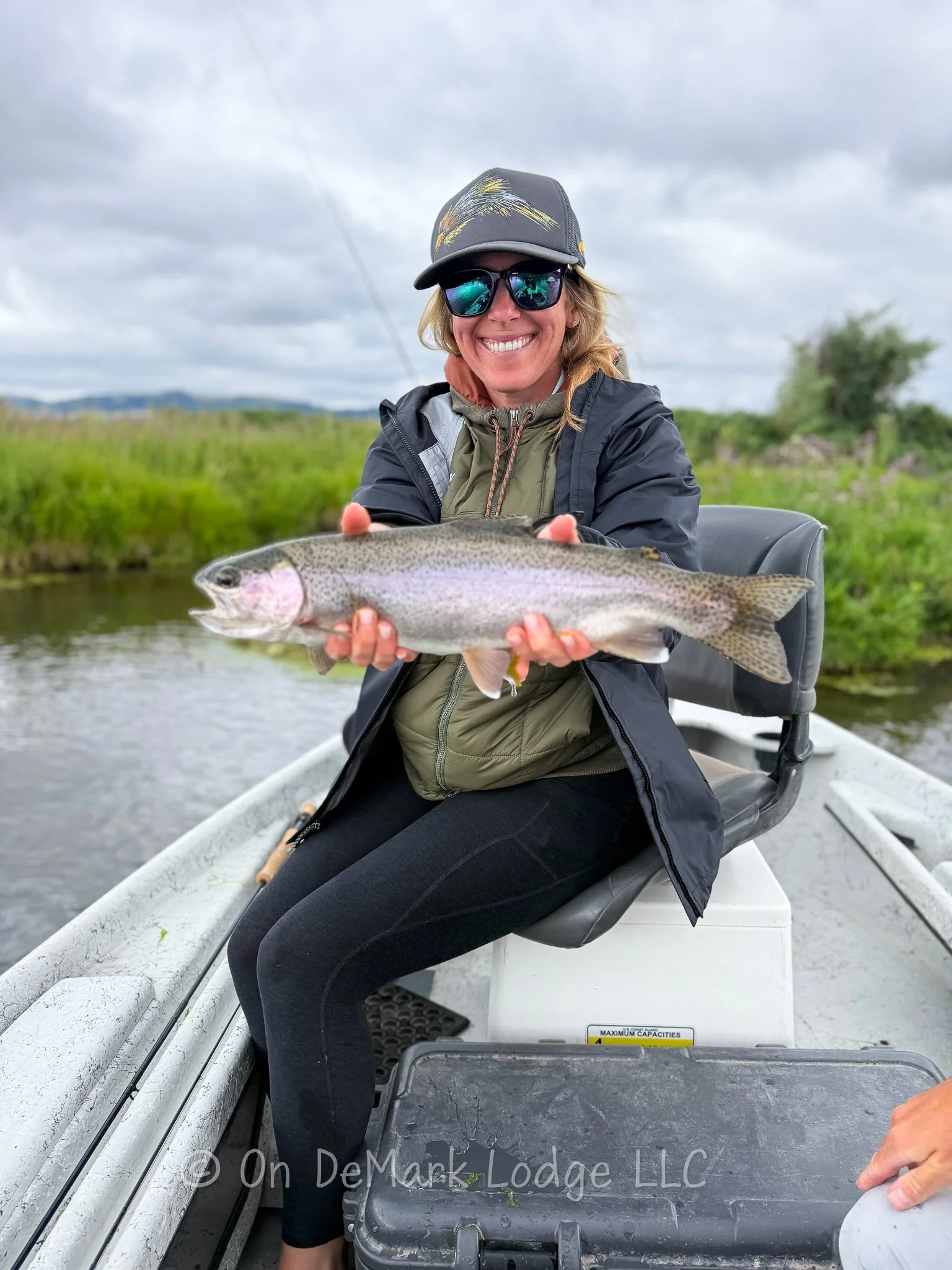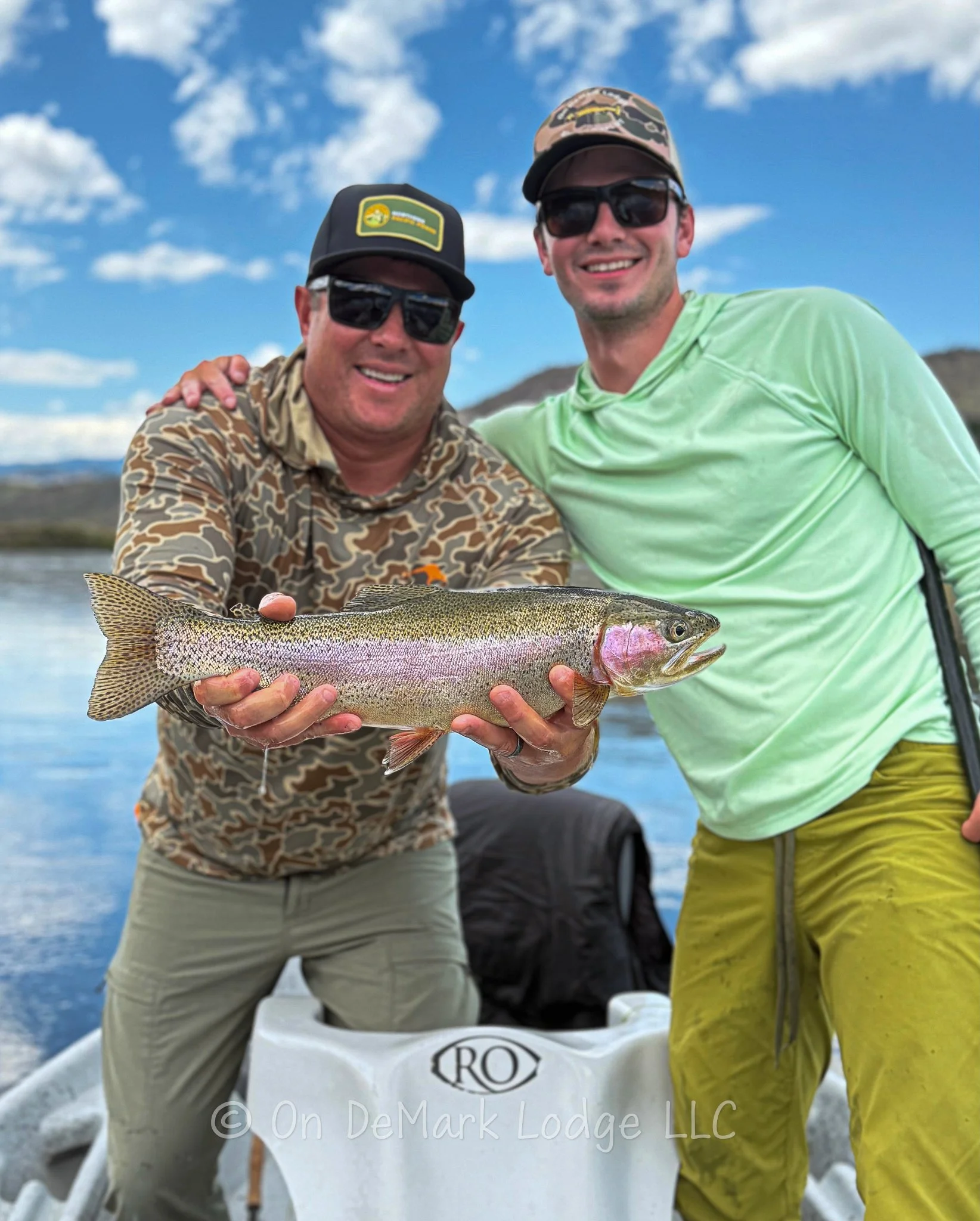Dry or Die: Late July River Update
One of the primary components of fly fishing that separates it from spin fishing is a degree of difficulty. Fly fishing is challenging, and that’s why it is so much fun. The epitome of the challenge is dry fly fishing. It's about a sense of achievement when you finally fool the big sipping rainbow that you've been casting at for half an hour. This is the time of year for those experiences. Over the last few weeks, the Trico hatch has hit its stride.
Clouds of Tricos in the morning.
Clouds of mating flies fill the air in the early morning, and a couple hours later they cascade down to the water's surface, where they inevitably meet a rising fish looking for its next meal. We’re seeing rising fish all over the river in the mornings, which is allowing for some great dry fly fishing to extremely consistent fish. Nymphing has hit the wayside as we spend these summer days fooling the trout we can see feeding on the surface. It truly is a beautiful time of year.
The most important skill to have when fishing dries on the Mo’ is patience. One thing to understand with Tricos is the sheer amount of food on the water. If you look on the surface during an exceptional hatch, it will be a constant stream of Trico spinners floating in the drift.
Buffet line of Tricos on the surface.
This consistency of bugs on the water puts trout into a trance. A rhythm of rises. They will sit in one lane without moving left or right, and eat in a consistent tempo. For example, you’ll watch a fish in swifter water rise about every five seconds in the same lane, or you’ll see a fish in softer water rise every 10 seconds.
Pod of Rising fish in a soft back eddy.
These fish don’t want to move out of their lane to eat, because they are inherently lazy creatures. So we need to put our fly in their lane, when they want it in their lane. You need that fly in front of the fish at the right timing of their rise. This takes patience and an open mind. This type of feeding is rare on trout streams and fairly unique to the Mo’. It can be tough and a little frustrating at first, but after some practice and a little coaching, it is hands down the most rewarding way to catch trout. Watching a 20 inch rainbow slowly rise and sip your dry fly like another natural Trico scratches an itch that is hard to describe. Every fish caught is an achievement, and every fish we see eating our fly is an experience that is hard to forget.
Craig and Steve with a beautiful Trico sipper.
While I preface Trico fishing as difficult, I would like to add that sometimes, you just get lucky. There are days where you just figure it out, and the fish cooperate, and plenty of trout can hit the net. It just takes practice. Over the last couple weeks, most of our guests have been totally committed to throwing dries, and we’ve been rewarded with some awesome fish, and some memorable experiences. The thing all these anglers had in common was a positive attitude and patience. You just have to keep fishing and observing until you figure it out. It’s worth it.
Elizabeth with a Mighty Trico eater.
Warren and James with a chunky dry fly eater.
While Trico fishing can be highly technical and precise, terrestrial fishing is quite the opposite. I’m talking about ants, beetles, and grasshoppers. In the hotter afternoons, we’ve been blind fishing terrestrials to some awesome results. Seeing a big brown rise in slow motion, open his mouth, and let your hopper fall into his belly is the coolest sight on the river. Most of the hopper eats I see are permanently burned into my memory. The name of the game with terrestrials is long casts and then letting those babies ride. Long drifts in likely areas is key.
Craig with a healthy hopper eater.
Terrestrial fishing has been on and off depending on weather, but the days where it's going have been great.
Streamer fishing is also on the menu, but only on the cloudy days. When we see thunderstorms in the afternoons, we also see big fish chasing streamers. Long casts with fast retrieves are getting it done. With the water being so clear here, streamer fishing is a true visual treat. Most of the eats you get on a streamer you can see, which is cool, but can also cause you to miss a lot of fish. You will see tons of fish chase but not eat your streamer when conditions are right. The key to catching them is stripping until you feel them eat it, not just setting when you see them eat it.
As for a general update, this July has been awesome. We’ve seen cooler average temperatures than last year, fairly consistent water flows and great water temps. The hatches have been different than last year, which happens every season. Last year was a killer Caddis year, with subpar Trico hatches, while this year has been the opposite. We’re seeing awesome Trico hatches and mediocre Caddis activity. We also saw PMDs stick around a little longer this year, and so far the terrestrial fishing is a bit better than last year. Temperatures as of late have been in the low 80’s and high 70’s, and this trend looks like it’ll continue into the near future. We’ve seen some rain on and off, with scattered thunderstorms in the afternoons. The lodge has been busy, and it gets busier as we move into August. We’re already booking for the 2026 season, so if you’re interested in Trico and hopper fishing for next year, don’t be afraid to contact us with any questions you have. Hope you all are having a great summer and getting some fishing in. We’ll see you when you get here!



